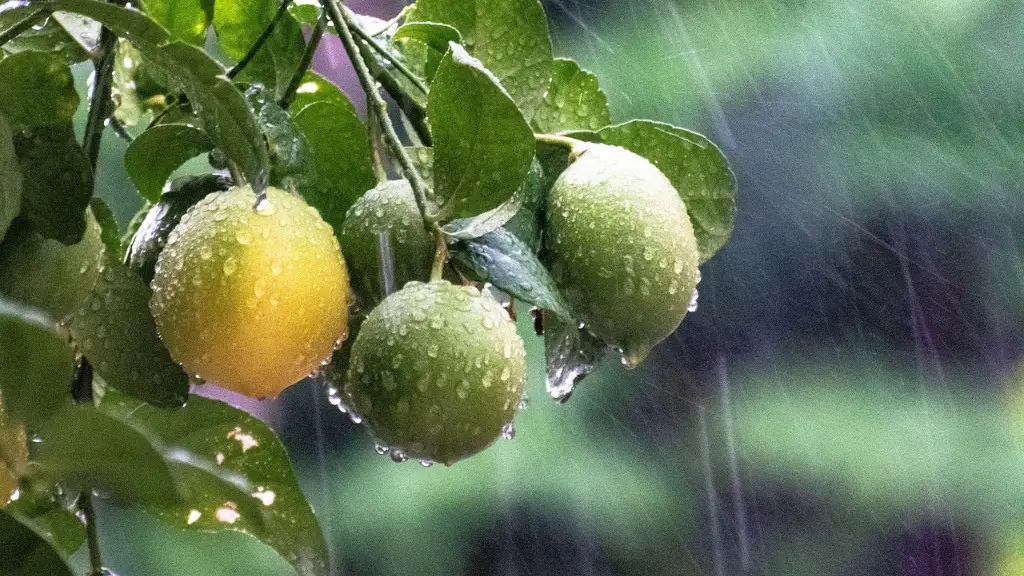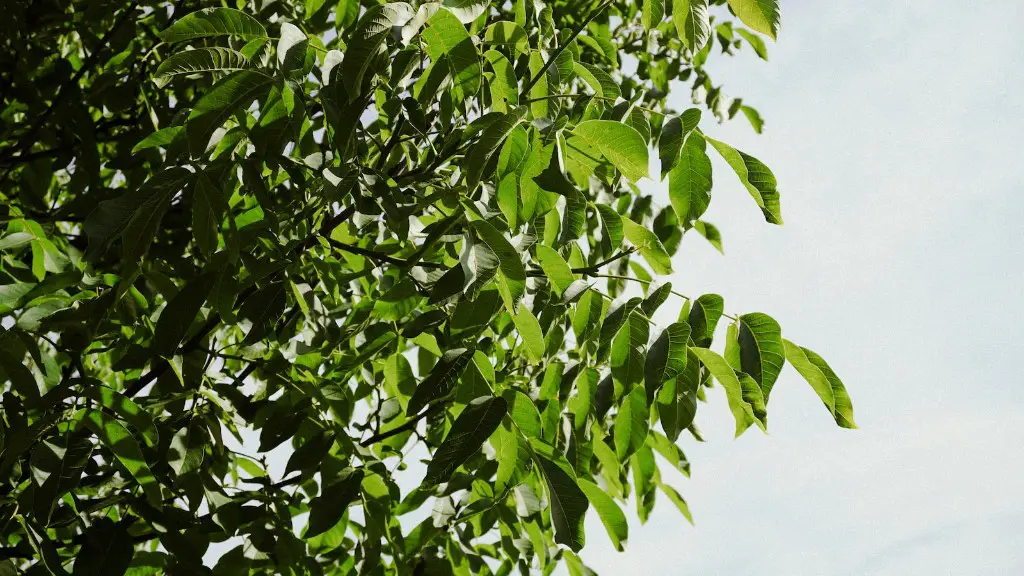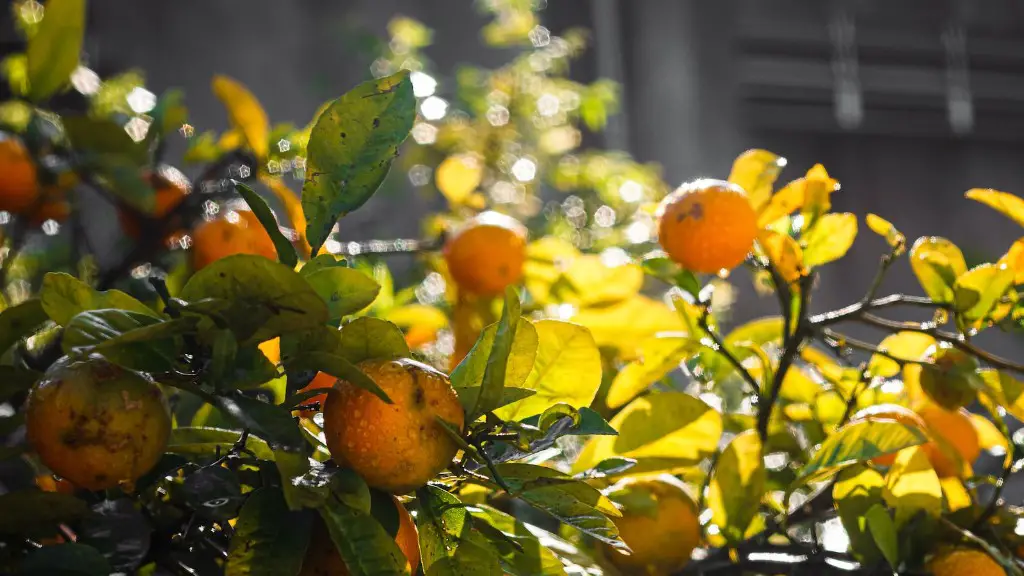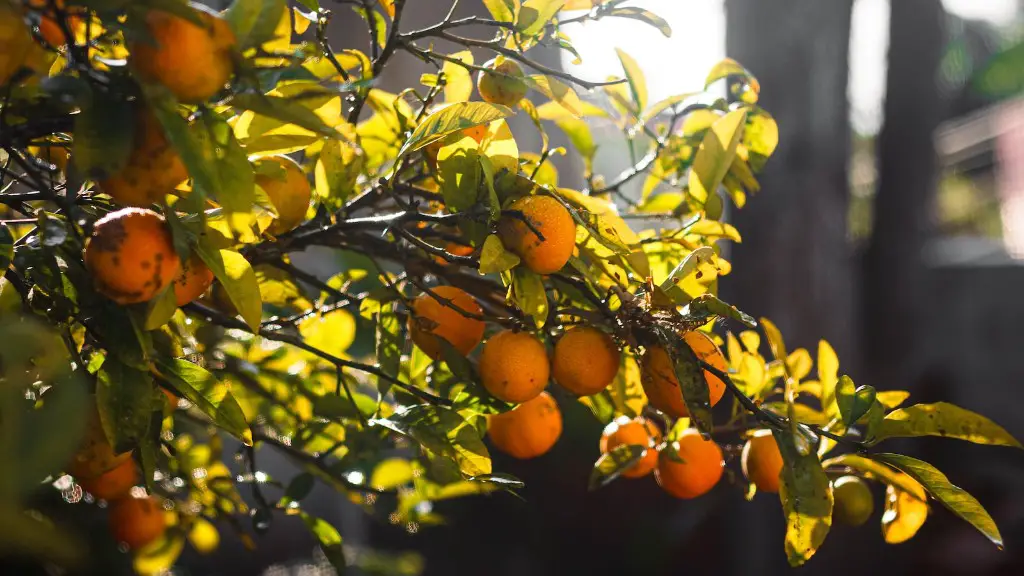When the temperatures start to drop, many of us might be tempted to bring our lemon trees indoors. There are a variety of benefits to doing so – such as enjoying the beautiful scents and flavors of our homegrown citrus year-round – but when is the best time to bring a lemon tree inside?
The key question to answer first is when the temperature outside starts becoming too cold for the lemon tree to survive. In general, lemon trees do best in warm climates and can start to suffer when temperatures drop below 15 degrees Celsius. So, if your local temperatures consistently dip below this threshold in the evenings, it’s best to start thinking about bringing the tree inside.
When you decide to move the lemon tree indoors, you should assess the growing conditions of your home. Do you have access to adequate lighting, ventilation, and airflow? Lemon trees prefer lots of sunny, breezy days and high humidity levels. If your home is able to provide these conditions, you should be able to bring the lemon tree indoors without a problem.
Finally, it’s important to consider the overall size of the lemon tree before you attempt to bring it inside. Smaller trees can be easily moved while larger, established trees might require additional support. If the tree is larger than expected, it might be best to leave it outdoors and use artificial heating methods if needed.
In summary, when thinking about bringing a lemon tree indoors, it’s important to consider the temperature outside and the overall size of the tree. Make sure you have access to adequate lighting, ventilation, and airflow and ensure the tree is receiving enough sunlight and breeze. If all these conditions are met, you should have no problem bringing your lemon tree inside for the colder months.
Which Trees Can Be Grown Inside
When deciding on a lemon tree for indoor growth, it’s important to consider your climate, the size of the tree, and the growing conditions offered in your home. Lemon trees that have been grown in containers, such as Meyer lemon and Eureka lemon trees, are best suited for indoor growth as they are smaller in size and require less maintenance than larger trees.
If you decide to go with a larger, established tree, try and prune it or pot it into a manageable size before bringing it indoors. While smaller trees can be quite easy to move, larger trees will require more support and may require the help of multiple people. Keep in mind that larger trees are revered for their yields and aesthetics, so if you’re someone who values these qualities, it might be worth your while to source a larger tree.
When it comes to indoor lemon trees, any variety will work as long as it is smaller in size. However, certain species may produce better results — such as the Meyer lemon which offers higher yields and a sweeter flavor. When shopping for a lemon tree, take the time to inspect the variety, size of the root ball, and the overall health of the tree in order to ensure it is able to thrive indoors.
Overall, when it comes to indoor lemon trees, any variety can certainly be grown — as long as it is smaller in size and offers adequate humidity, sunlight, and ventilation levels. Varieties such as the Meyer lemon, Eureka lemon, and Femminello Santa Teresa lemon offer the best results but it is important to inspect the tree prior to purchasing.
The Care Of Indoor Lemon Trees
Leaving a lemon tree outdoors can mean extra maintenance and lots of exposure to varying temperatures. On the other hand, bringing a lemon tree indoors can offer protection from extreme temperatures and make maintenance much easier. That being said, it is still important to keep up with certain maintenance tasks to ensure your lemon tree is healthy and strong.
Most importantly, lemon trees need 3 to 6 hours of direct sunlight daily to stay healthy and should be kept around 25-30 Celsius. If you’re struggling to provide enough light, you can try investing in a plant grow light or move the tree closer to a window. Providing adequate ventilation is also important – be sure to open windows or doors if possible.
Watering needs can vary depending on the variety of lemon tree and the season. That being said, it’s important to always keep the soil moist, but not too moist as this can cause rotting. It’s best to stick to a watering schedule, either watering every 2 to 5 days or when the top soil starts to feel dry. A great way to check this is with a moisture meter.
In addition to water, lemon trees need nutrients in order to support their growth. Fertilizer should be used about every 6 months for container-grown trees and once a year for established trees. Natural fertilizers such as compost, fish emulsion, or chicken pellets offer the best results.
Overall, bringing a lemon tree indoors can offer protection from extreme temperatures, but it is still important to keep up with regular maintenance tasks such as providing adequate sunshine, ventilation, and nutrients. A regular watering schedule is also important and can help you maintain a healthy, thriving lemon tree throughout all seasons.
Repotting Of Indoor Lemon Trees
Repotting is an important part of caring for an indoor lemon tree. As the tree grows, it can sometimes outgrow its original pot and require a larger one. The best time to repot is usually in late winter or early spring — when the tree is in its dormant phase and just before the new growth period.
When it comes to repotting, it is important to select the proper potting mix and pot size. The potting mix should be light and well-draining, as lemon trees often suffer from root rot if the soil is too wet. The pot should also have adequate drainage holes to ensure any excess water can escape.
When it comes time to repot your lemon tree, gently remove it from its current pot and inspect the roots for any signs of damage or disease. If the roots are too tangled or congested, it can be helpful to lightly prune them back. After this, place the tree in its new pot and add potting soil back around the roots.
Finally, be sure to water the soil thoroughly and keep an eye on the tree for the first few weeks, as the tree may go into shock after repotting. Overall, repotting is an important part of keeping an indoor lemon tree healthy and thriving. Be sure to select the right potting mix and pot size and check the roots for any signs of damage before proceeding.
Pruning Of Indoor Lemon Trees
For indoor lemon tree, it is important to prune them from time to time. Pruning helps to promote strong growth, reduce insect infestations, and manage the overall size of the tree. Pruning should be done during the early spring when the tree is in its dormant stage and beginning its new growth period.
When pruning, it is important to identify and remove any dead, diseased, or damaged branches. This helps promote strong, healthy growth and reduce insect infestations. In addition, it is also helpful to trim off any suckers, which are branches that often appear along the trunk or major branches of the tree.
In addition to trimming off dead or damaged branches, it is helpful to shape the tree as well. Lemon trees like to be pruned in a cone shape, so remove any branches that appear too long or off-shape. This will help the tree maintain its desired shape and encourage strong, healthy growth.
Overall, pruning is an important part of caring for indoor lemon trees. It helps promote strong growth, reduce insect infestations, and maintain the desired shape of the tree. Be sure to identify and remove any dead or damaged branches, trim off any suckers, and shape the tree as needed.
Pests And Disease Of Indoor Lemon Trees
When it comes to indoor lemon trees, it is important to inspect the leaves and branches for any signs of pests or disease. Common pest infestations include mealybugs, aphids, whitefly, and scale insects, while common disease issues include fungal leaf spots and powdery mildew.
If you do notice signs of pest infestation, it is important to act quickly. Organic insecticides such as neem oil or horticultural oils can be sprayed onto the leaves, branches, and soil and have been proven to be effective at controlling insect populations.
In addition, it is important to inspect the tree for any signs of disease. Powdery mildew is a common fungal infection that causes leaves to appear whitish-grey with a powdery, dusty coating. Fungal leaf spots are another common issue that cause circular spots to appear on the leaves with yellow rings around them.
When dealing with fungal diseases, it is important to treat with a copper-based fungicide as soon as possible. Copper fungicides are effective treatments and can be used to reduce current infections and prevent further spread.
Overall, it is important to inspect an indoor lemon tree regularly for any signs of pests and disease. If caught early, most pests and disease issues can be managed using organic insecticides or copper-based fungicides. Be sure to act quickly as any further infestation or spread can quickly cause your tree to become unhealthy and unproductive.




